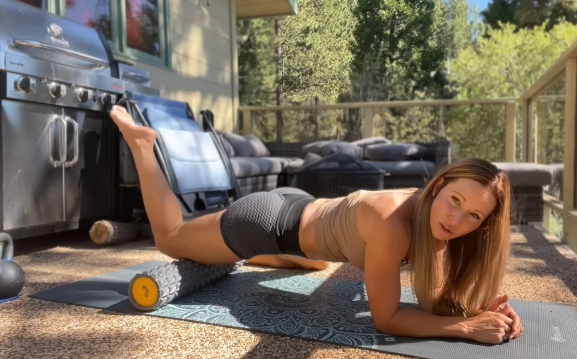
Tight hamstrings are a common issue that can lead to discomfort, restricted movement, and even injury. Whether you are an athlete, a yoga enthusiast, or someone who simply wants to move more freely, improving your hamstring flexibility is essential for overall mobility and injury prevention. Many people rely solely on static stretching, but there are more effective ways to increase hamstring flexibility. In this article, we’ll explore four proven strategies to lengthen and strengthen your hamstrings safely and effectively.

1. Active Dynamic Stretching
Dynamic stretching involves controlled, active movements that take your muscles through a full range of motion. Unlike static stretching, which holds a stretch in one position, dynamic movements prepare the muscles for activity and improve flexibility over time.
How to Do It:
- Leg Swings: Stand next to a wall for support. Swing one leg forward and backward in a controlled motion, gradually increasing the range. Do 10-15 swings per leg.
- High Kicks: Stand tall and kick one leg straight up, reaching for your opposite hand. Alternate legs for 10-15 reps.
- Inchworm Walks: Start in a standing position, bend forward to touch your toes, and walk your hands out into a plank. Slowly walk your feet toward your hands and repeat 5-10 times.
Why It Works:
Dynamic stretching activates the muscles, increases blood flow, and gradually improves flexibility without causing excessive strain. This method is particularly beneficial before workouts or activities that involve the hamstrings.

2. Eccentric Strengthening Exercises
Many people overlook the role of strength in flexibility. Strong hamstrings can control lengthening movements better, reducing tightness and increasing mobility. Eccentric exercises focus on lengthening the muscle under tension, which has been shown to improve flexibility over time.
How to Do It:
- Nordic Hamstring Curls: Kneel on the ground with your feet secured (or have a partner hold them). Slowly lower your body forward as far as you can, then push yourself back up. Perform 3 sets of 5-8 reps.
- Romanian Deadlifts: Hold a barbell or dumbbells, hinge at the hips, and slowly lower the weight while keeping your hamstrings engaged. Perform 3 sets of 8-12 reps.
- Slow Hamstring Bridges: Lie on your back with your feet on the floor. Lift your hips and slowly extend one leg straight out. Lower down with control. Perform 3 sets of 8 reps per leg.
Why It Works:
Eccentric training helps muscles adapt to being lengthened under load, leading to long-term flexibility improvements while also strengthening the hamstrings to prevent injuries.

3. Neural Gliding Techniques
Sometimes, tightness in the hamstrings isn’t just about the muscle—it’s about the nerves. The sciatic nerve runs through the hamstring, and if it becomes restricted, it can create the sensation of tightness. Neural gliding exercises help improve nerve mobility, which can instantly improve flexibility.
How to Do It:
- Seated Sciatic Nerve Glide: Sit on a chair with one foot flat on the ground. Extend the other leg straight, flexing your foot toward you. As you extend, tilt your head back slightly. Then, bend your knee and tuck your chin. Repeat 10-15 times per leg.
- Lying Nerve Flossing: Lie on your back with one leg extended and the other bent. Hold the back of your thigh and straighten your leg toward the ceiling while flexing and pointing your foot. Repeat 10-15 times per leg.
Why It Works:
By improving nerve mobility, you can reduce nerve-related tightness, allowing your hamstrings to lengthen without resistance.

4. Proprioceptive Neuromuscular Facilitation (PNF) Stretching
PNF stretching is an advanced technique that involves contracting and relaxing the muscle to improve flexibility more effectively than static stretching alone.
How to Do It:
- PNF Hamstring Stretch:
- Lie on your back and lift one leg while keeping the other leg on the floor.
- Use a strap or have a partner hold your leg straight.
- Gently push against the strap (or partner’s hand) with about 50% effort for 5 seconds.
- Relax and allow your leg to move deeper into the stretch.
- Repeat 3-5 times per leg.
Why It Works:
PNF stretching uses the body’s natural reflexes to trick the nervous system into allowing a greater range of motion. It has been proven to provide immediate and long-lasting improvements in flexibilit

Conclusion
Improving hamstring flexibility requires more than just passive stretching. By incorporating active dynamic movements, eccentric strengthening, neural gliding, and PNF stretching, you can achieve greater flexibility, reduce the risk of injury, and enhance overall movement efficiency. Start implementing these strategies today, and you’ll notice a significant improvement in your hamstring mobility over time!


